diy dummy load
Being a new ham, I’m starting to find myself in need of a dummy load. I’ve decided to build one of the fairly well-known paint can dummy loads. You can see some examples here, here, and here.
The basic construction of the dummy load is twenty 1k ohm metal film resistors in parallel, sunk into an oil filled container for cooling. Using 3 watt resistors, it should be able to take 60 watts easily and with the oil cooling it should be able to handle up to 100 watts for short periods of time.
To start, you will need a paint can, a sheet of brass or copper, twenty 1k ohm 3 watt metal film resistors, a set of insulated binding posts, a BAV21 signal diode or similar, an antenna jack (BNC or SO-239), some assorted wire, and mineral oil.

Drill out three holes in the lid. I opted for a BNC connector in the center and two binding posts on one side.

Next, take the brass (or copper) sheet and cut it down to fit inside the can.
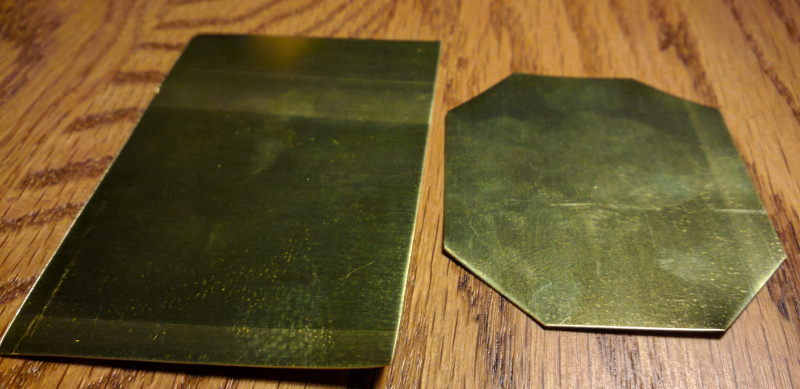
Next, punch holes in the sheets for the resistors to be soldered to with an additional larger hole in the center.
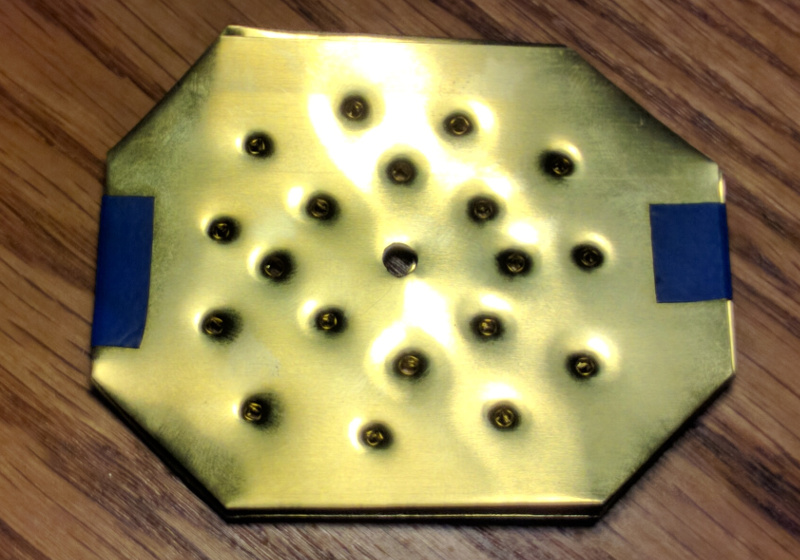
Next solder the resistors between the two sheets.

Next, grab a piece of wire (I used a piece of 14 guage stranded THHN) and feed it through the top sheet of brass and solder it to the bottom sheet. The bottom will now be your positive side.
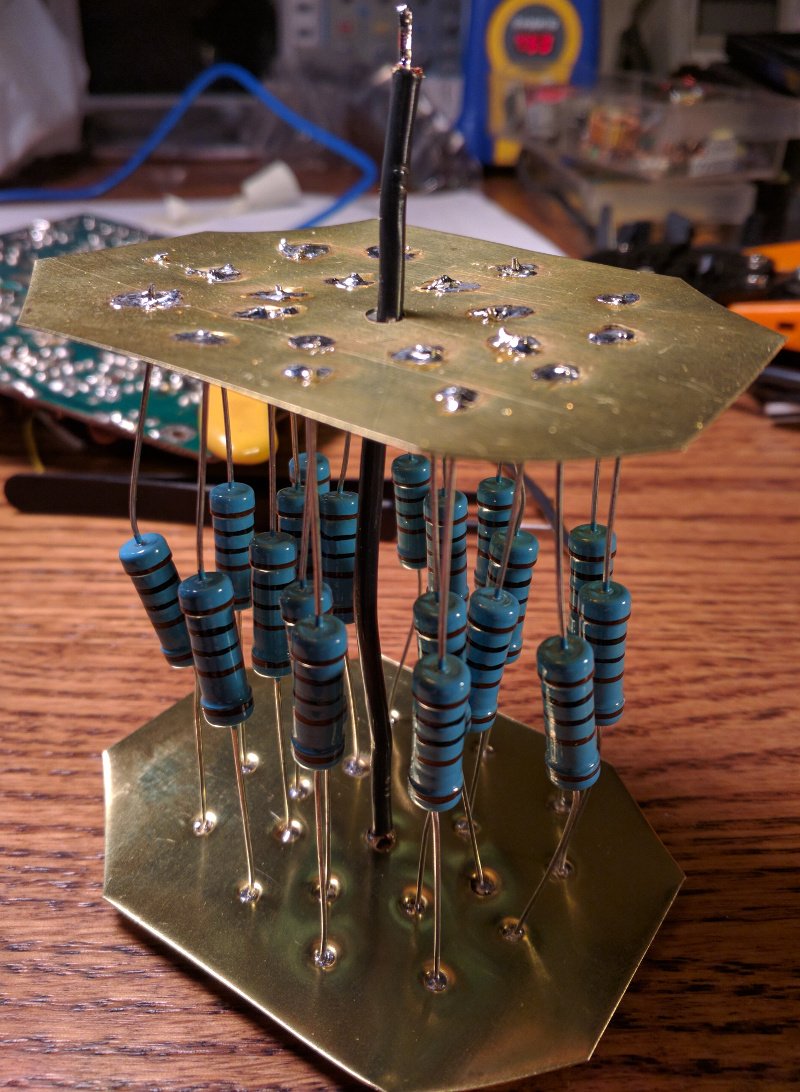
Solder the other end of the wire to your antenna jack. and take another piece of wire and connect the negative binding post to the top sheet of brass. At this point, I should have grounded the antenna jack. I forgot to do this and ended up having to tear off the sealant later and soldering a wire from the jack to the negative terminal.

Take another length of wire, and solder it to the bottom plate and run it up towards the positive binding posts. Get the insulation up past the top plate to prevent any shorting and then solder the BAV21 diode between the end of the wire and the positive binding post.

Next, I lined the inside of the paint can with craft paper to help prevent shorts if the paint can is bumped around.
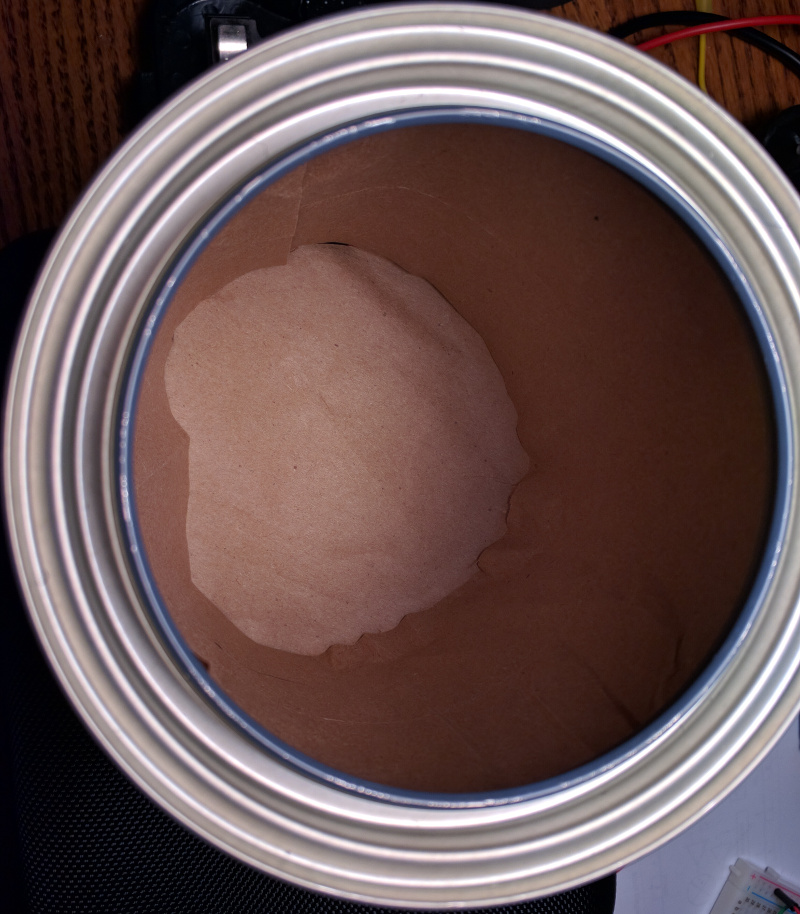
Then seal up the lid connections with silicone sealant to prevent leaks. Notice the now present wire from the antenna jack to ground.

Then fill the can with oil and close the lid.
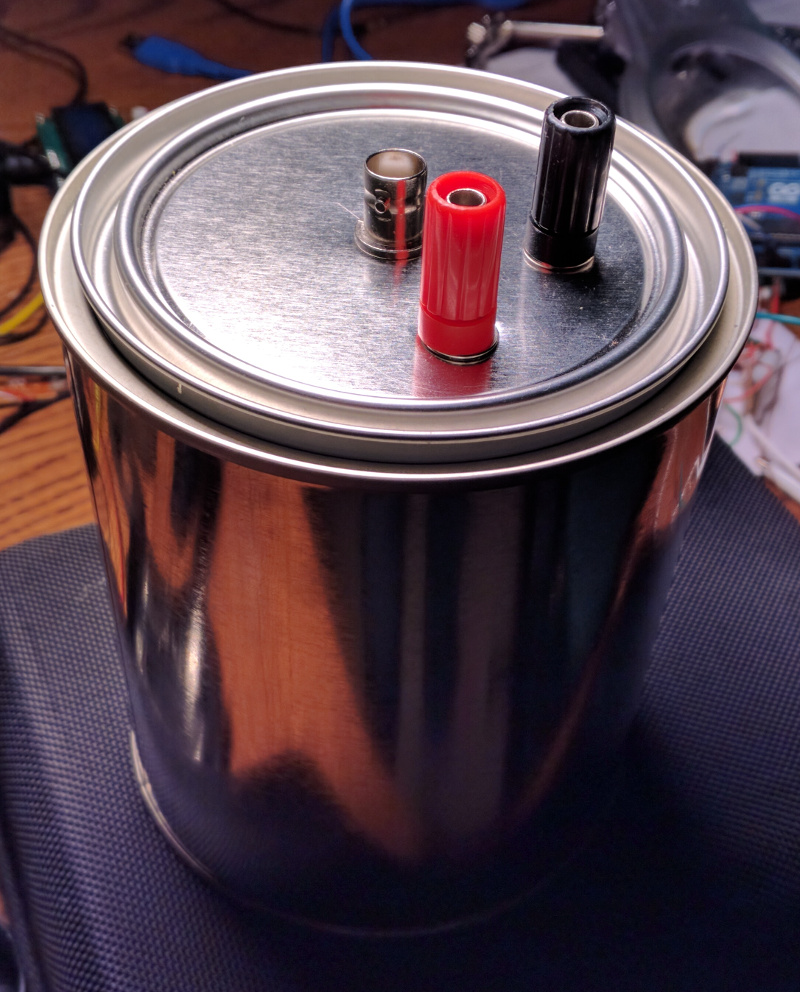
I haven’t actually used the dummy load yet, so I am not sure how well it performs. I don’t even own any HF radios other than the small qrp radios that I am starting to build. If I ever get a chance to hook this up to anything with some power, I will update this section.